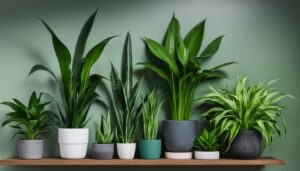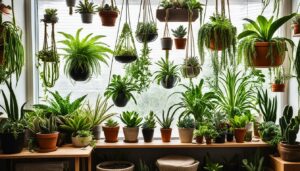Introduction:
Delving into the realm of indoor gardening can be a rewarding journey, especially when it involves growing aromatic herbs like mint. The versatility of mint, with its myriad culinary, medicinal, and aesthetic uses, makes it a delightful addition to any indoor garden. Whether you’re a seasoned gardener or a novice with a green thumb, cultivating mint indoors offers a fulfilling experience that not only enhances your living space but also provides you with a fresh supply of this versatile herb year-round.
In this guide, we’ll explore the ins and outs of growing mint indoors, from selecting the right varieties to maintaining optimal growing conditions and harvesting your bounty. With a bit of knowledge and dedication, you can transform your indoor space into a flourishing mint garden, brimming with fragrance and flavor. Let’s embark on this aromatic journey and unlock the secrets to successfully nurturing mint within the confines of your home.
Choosing the Right Mint Varieties
When venturing into indoor mint gardening, selecting the appropriate varieties lays the foundation for a successful and thriving herb garden. Mint comes in various species and cultivars, each with its unique characteristics in terms of flavor, aroma, growth habit, and adaptability to indoor environments. Here, we’ll explore some popular mint varieties suitable for indoor cultivation, along with their distinguishing features:
- Peppermint (Mentha × piperita):
- Flavor: Peppermint boasts a bold, refreshing flavor with a cooling sensation.
- Aroma: Its strong menthol aroma makes it a favorite for culinary and medicinal purposes.
- Growth Habit: Peppermint tends to spread vigorously via underground runners, making it an ideal candidate for container gardening.
- Recommended for: Tea infusions, desserts, savory dishes, and aromatherapy.
- Spearmint (Mentha spicata):
- Flavor: Spearmint offers a milder, slightly sweet flavor compared to peppermint.
- Aroma: Its aromatic profile is characterized by a fresh, herbaceous scent.
- Growth Habit: Spearmint grows in compact clumps and is less invasive than peppermint, making it suitable for smaller containers.
- Recommended for: Mint juleps, mojitos, salads, sauces, and garnishes.
- Chocolate Mint (Mentha × piperita ‘Chocolate’):
- Flavor: True to its name, chocolate mint exhibits hints of chocolate alongside its minty taste.
- Aroma: Its fragrance combines the familiar minty notes with subtle chocolate undertones.
- Growth Habit: Chocolate mint has a spreading growth habit but is less aggressive than peppermint, making it manageable in containers.
- Recommended for: Desserts, beverages, chocolate-based recipes, and herbal infusions.
- Lemon Mint (Mentha × piperita ‘Citrata’):
- Flavor: Lemon mint offers a citrusy twist to traditional mint flavor, imparting a zesty freshness.
- Aroma: Its aroma is reminiscent of lemon with underlying minty notes.
- Growth Habit: Lemon mint forms compact clumps and is well-suited for containers, requiring regular pruning to maintain its shape.
- Recommended for: Lemonade, fruit salads, seafood dishes, and aromatic potpourris.
- Pineapple Mint (Mentha suaveolens ‘Variegata’):
- Flavor: Pineapple mint infuses a subtle pineapple flavor into its minty profile, adding a tropical touch.
- Aroma: Its fragrance combines minty undertones with hints of pineapple.
- Growth Habit: Pineapple mint exhibits a bushy growth habit and thrives in containers with ample sunlight.
- Recommended for: Fruit salads, cocktails, herbal teas, and culinary garnishes.
Essential Growing Conditions for Indoor Mint
Creating a conducive environment is essential for the successful cultivation of mint indoors. While mint is known for its resilience and adaptability, providing optimal growing conditions ensures vigorous growth, abundant foliage, and robust flavor. Here are key factors to consider when establishing the perfect environment for your indoor mint garden:
- Light:
- Mint thrives in bright, indirect sunlight. Place your mint plants near a south-facing window where they can receive at least 4-6 hours of sunlight daily.
- If natural light is insufficient, supplement with artificial grow lights to ensure adequate illumination for healthy growth.
- Monitor your mint plants closely, adjusting their placement to prevent leaf scorching or stretching due to inadequate light.
- Temperature:
- Mint prefers moderate temperatures ranging from 65°F to 70°F (18°C to 21°C). Avoid exposing your plants to extreme heat or cold, as it can stress the plants and affect their growth.
- Maintain consistent temperatures within the recommended range, especially during winter months when indoor heating may lead to fluctuations.
- Humidity:
- Mint thrives in humid environments, preferring relative humidity levels between 50% and 70%. Indoor environments, particularly during winter, tend to be drier due to heating systems.
- Increase humidity around your mint plants by misting them regularly with water or placing a humidity tray filled with water and pebbles beneath the containers.
- Grouping multiple mint plants together can also help create a microclimate with higher humidity levels.
- Soil:
- Use well-draining, nutrient-rich potting mix with a slightly acidic to neutral pH (around 6.0 to 7.0).
- Consider adding organic matter such as compost or aged manure to enhance soil fertility and structure.
- Ensure the containers have adequate drainage holes to prevent waterlogging, which can lead to root rot.
- Watering:
- Keep the soil consistently moist but not waterlogged. Water your mint plants whenever the top inch of soil feels dry to the touch.
- Avoid overwatering, as it can promote fungal diseases and root rot. Allow excess water to drain freely from the containers.
- Consider using a saucer or tray beneath the pots to catch excess water and prevent water damage to your indoor surfaces.
Container Selection and Maintenance
Choosing suitable containers for your indoor mint garden is crucial for providing adequate space, drainage, and room for growth. Additionally, proper maintenance of containers ensures the health and longevity of your mint plants. Here’s a comprehensive guide to container selection and maintenance:
- Container Size:
- Opt for containers with a diameter of at least 8 to 12 inches to accommodate the spreading growth habit of mint.
- Choose deeper pots to allow for healthy root development and prevent overcrowding.
- Consider using individual pots for each mint plant to prevent competition for resources and minimize the spread of invasive varieties.
- Material:
- Select containers made of porous materials such as clay or terracotta, which allow for better air circulation and moisture regulation.
- Alternatively, choose high-quality plastic or resin containers that are lightweight, durable, and resistant to moisture damage.
- Avoid metal containers, as they can conduct heat and may affect soil temperature, potentially harming the roots.
- Drainage:
- Ensure that your chosen containers have sufficient drainage holes at the bottom to prevent waterlogging and promote healthy root growth.
- Place a layer of gravel or small stones at the bottom of the pots to improve drainage and prevent soil from clogging the drainage holes.
- Elevate the containers slightly using pot feet or risers to allow excess water to drain freely and prevent water accumulation.
- Maintenance:
- Regularly inspect your containers for signs of damage, such as cracks or chips, and replace them if necessary to prevent water leakage and soil loss.
- Clean your containers periodically to remove dirt, algae, and mineral deposits that can accumulate on the surface.
- Sterilize used containers before planting new mint to prevent the spread of pests and diseases.
- Rotate your containers regularly to ensure uniform sunlight exposure and promote even growth of your mint plants.
- Repotting:
- Monitor the growth of your mint plants and repot them as needed to provide ample space for root expansion.
- Repot mint plants every 1 to 2 years or when they outgrow their current containers, preferably in spring when they enter their active growing phase.
- Use fresh potting mix and larger containers when repotting to refresh the soil and accommodate the growing needs of your mint plants.
Watering and Fertilizing Practices
Proper watering and fertilizing are essential components of mint care, ensuring robust growth, flavorful foliage, and bountiful harvests. By adhering to a consistent watering schedule and providing appropriate nutrients, you can maintain healthy mint plants throughout their growing season. Here’s a detailed guide to watering and fertilizing practices for indoor mint:
- Watering:
- Mint plants have a moderate water requirement and prefer consistently moist soil.
- Water your mint plants whenever the top inch of soil feels dry to the touch, typically every 2 to 3 days, depending on environmental conditions.
- Use room temperature water to avoid shocking the roots and ensure even distribution throughout the soil.
- Water the plants at the base, avoiding wetting the foliage to reduce the risk of fungal diseases.
- Adjust the frequency of watering based on factors such as temperature, humidity, and soil drainage to prevent overwatering or underwatering.
- Fertilizing:
- Mint is a relatively low-maintenance herb that doesn’t require heavy feeding. However, periodic fertilization helps maintain healthy growth and productivity.
- Apply a balanced, water-soluble fertilizer formulated for herbs or vegetables every 4 to 6 weeks during the growing season, typically from spring to early fall.
- Dilute the fertilizer according to the manufacturer’s instructions and apply it to moist soil to prevent root burn.
- Alternatively, use organic fertilizers such as compost or compost tea to provide slow-release nutrients and improve soil fertility naturally.
- Avoid overfertilizing mint, as excessive nitrogen can lead to lush foliage growth at the expense of flavor and aroma.
- Mulching:
- Mulching helps retain soil moisture, suppresses weed growth, and regulates soil temperature, creating a favorable environment for mint plants.
- Apply a layer of organic mulch such as shredded leaves, straw, or compost around the base of your mint plants, maintaining a thickness of 1 to 2 inches.
- Ensure the mulch doesn’t come into direct contact with the mint stems to prevent moisture-related issues and fungal infections.
- Periodically replenish the mulch layer as needed to maintain its effectiveness and appearance.
- Monitoring and Adjustments:
- Monitor your mint plants regularly for signs of stress, such as wilting, yellowing leaves, or stunted growth, which may indicate inadequate watering or nutrient deficiencies.
- Adjust your watering and fertilizing practices based on plant responses and environmental changes to maintain optimal growing conditions.
- Keep a watering and fertilizing schedule to track your maintenance tasks and ensure consistent care throughout the growing season.
Pruning and Harvesting Techniques
Pruning and harvesting are essential tasks in maintaining the health, vigor, and productivity of your indoor mint plants. Regular pruning helps control growth, prevent overcrowding, and stimulate new growth, while harvesting ensures a steady supply of fresh mint leaves for culinary and medicinal purposes. Here’s a comprehensive guide to pruning and harvesting techniques for indoor mint:
- Pruning:
- Pruning is the process of removing excess growth, dead or damaged foliage, and spent stems to encourage bushier, more compact plants.
- Use clean, sharp scissors or pruning shears to make precise cuts, minimizing the risk of damage or infection.
- Begin pruning your mint plants when they reach a height of 6 to 8 inches, typically 4 to 6 weeks after planting or when they show signs of vigorous growth.
- Trim the stems back to just above a leaf node or set of leaves, cutting at a slight angle to promote healthy regrowth.
- Remove any yellowing or diseased foliage promptly to prevent the spread of pests and diseases.
- Regular pruning every 2 to 3 weeks throughout the growing season helps maintain the shape, vigor, and productivity of your mint plants.
- Harvesting:
- Harvesting involves selectively removing mature leaves and stems from your mint plants for culinary, medicinal, or decorative purposes.
- Wait until your mint plants are well-established, typically 8 to 10 weeks after planting, before initiating the first harvest.
- Selectively pluck the largest, outermost leaves and stems, leaving at least one-third of the plant intact to facilitate continued growth.
- Harvest mint leaves in the morning when their essential oils are most concentrated for maximum flavor and fragrance.
- Use clean, sharp scissors or pinch off the leaves and stems at the base to avoid damaging the plant.
- Harvest mint regularly throughout the growing season, avoiding excessive stripping of foliage to allow the plants to replenish and regrow.
- Maintenance Pruning:
- In addition to regular pruning, perform maintenance pruning as needed to remove any overcrowded, leggy, or straggly growth.
- Thin out densely packed areas to improve air circulation and reduce the risk of fungal diseases.
- Pinch back the tips of stems to promote branching and encourage a bushier growth habit.
- Monitor the overall health and appearance of your mint plants, adjusting your pruning techniques accordingly to maintain their vitality and vigor.
- Post-Harvest Care:
- After harvesting, inspect your mint plants for any signs of stress or damage, such as wilting or yellowing leaves.
- Water the plants thoroughly to replenish moisture lost during harvesting and promote recovery.
- Apply a diluted liquid fertilizer to provide essential nutrients and support new growth.
- Resume regular maintenance pruning to shape and maintain the health of your mint plants for continued productivity.
Conclusion
Cultivating mint indoors offers a rewarding and fulfilling experience for gardeners of all levels. Through careful attention to detail and adherence to proper growing practices, you can transform your indoor space into a flourishing mint garden, brimming with fragrance, flavor, and aesthetic appeal.
From choosing the right mint varieties to providing optimal growing conditions, selecting suitable containers, and implementing effective maintenance techniques, every aspect of indoor mint gardening contributes to the success and vitality of your herbaceous companions. By embracing the art of pruning and harvesting, you not only ensure the health and productivity of your mint plants but also enjoy a continuous harvest of fresh, aromatic foliage for culinary delights, medicinal remedies, and decorative accents.
As you embark on your indoor mint gardening journey, remember to approach each task with patience, curiosity, and a willingness to learn. Pay attention to the unique needs and preferences of your mint plants, adjusting your care routine accordingly to foster their growth and well-being. With dedication and perseverance, your indoor mint garden will flourish, enriching your life with its beauty, fragrance, and flavorful bounty year-round. So, roll up your sleeves, get your hands dirty, and let the aromatic allure of mint captivate your senses as you embark on this delightful gardening adventure.




